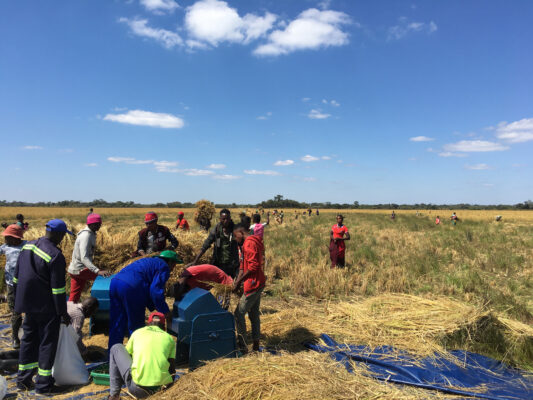Published 11 March 2022
Basseterre
Buckie Got It, St. Kitts and Nevis News Source
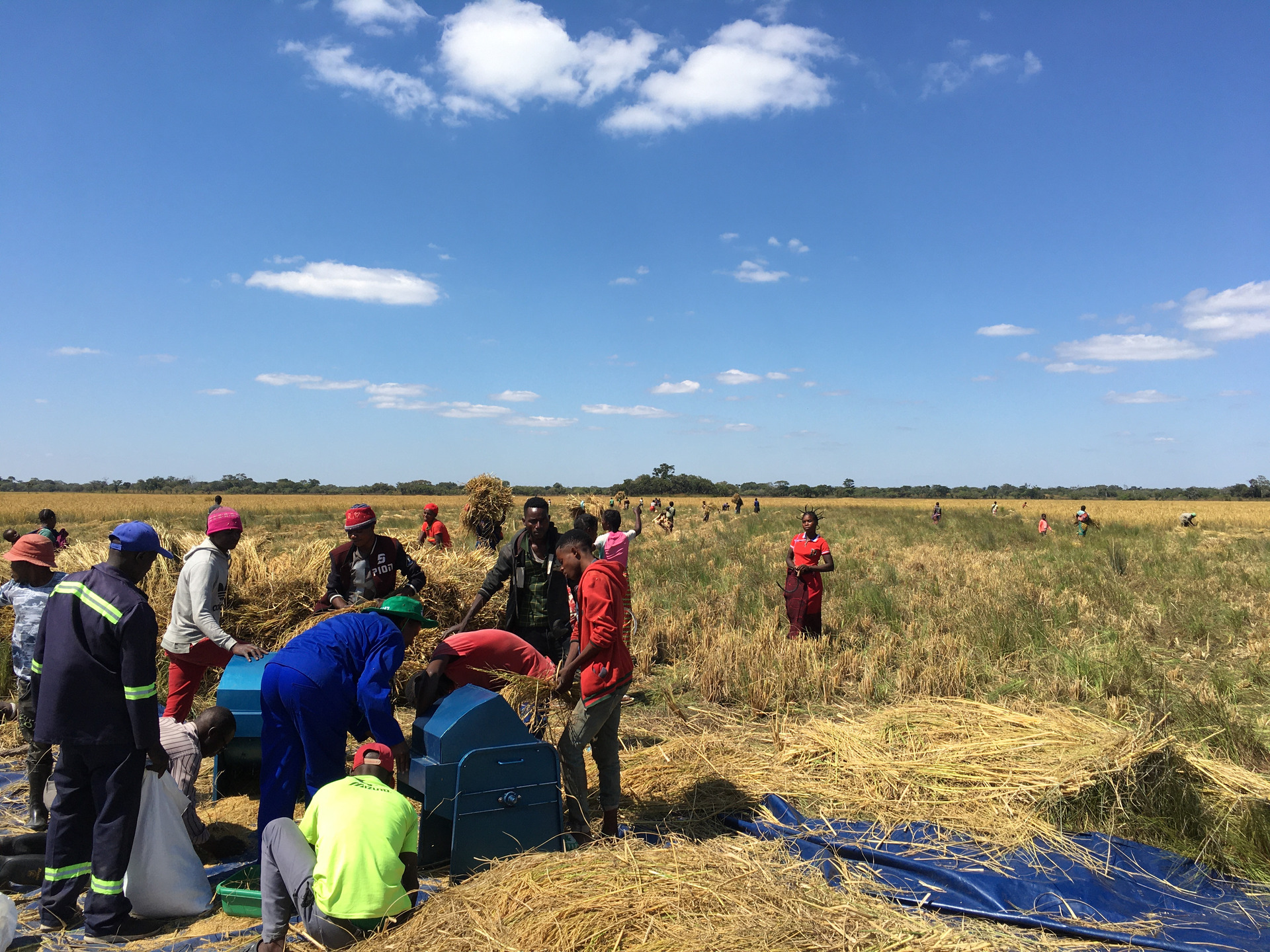
Supporting nutrition via rice production
Countries across Africa are producing more rice as a means of increasing food self-sufficiency and boosting agricultural incomes. A new project underway in Zambia has the additional aim of improving nutrition in rural areas.
Photo: Harvesting rice in Zambia. Farmers reap rice by hand. Communities work together to supply the required labor.
The Coalition for African Rice Development (CARD) launched in 2008, aiming to double rice production in Africa. A collaboration between the Alliance for a Green Revolution in Africa (AGRA) and JICA, the initial 23 sub-Saharan African member countries increased rice production from 14 to 28 million tons over the first 10 years. In 2019, membership grew to 32 countries, and the group set a target of doubling rice production again by 2030.
“The aims of CARD are to raise the self-sufficiency rate for grains and improve farmers’ livelihoods,” says MATSUSHITA Yuichi of JICA’s Economic Development Department, who works with CARD.
Landlocked Zambia in southern Africa is working toward these goals. Because Zambia’s staple food nshima is made from maize flour (white cornmeal), maize is by far the most popular grain among farmers. However, as Zambian diets become more varied, demand for rice is increasing. But Zambian farmers have struggled to increase rice production, leaving the country reliant on imports from Asia and elsewhere.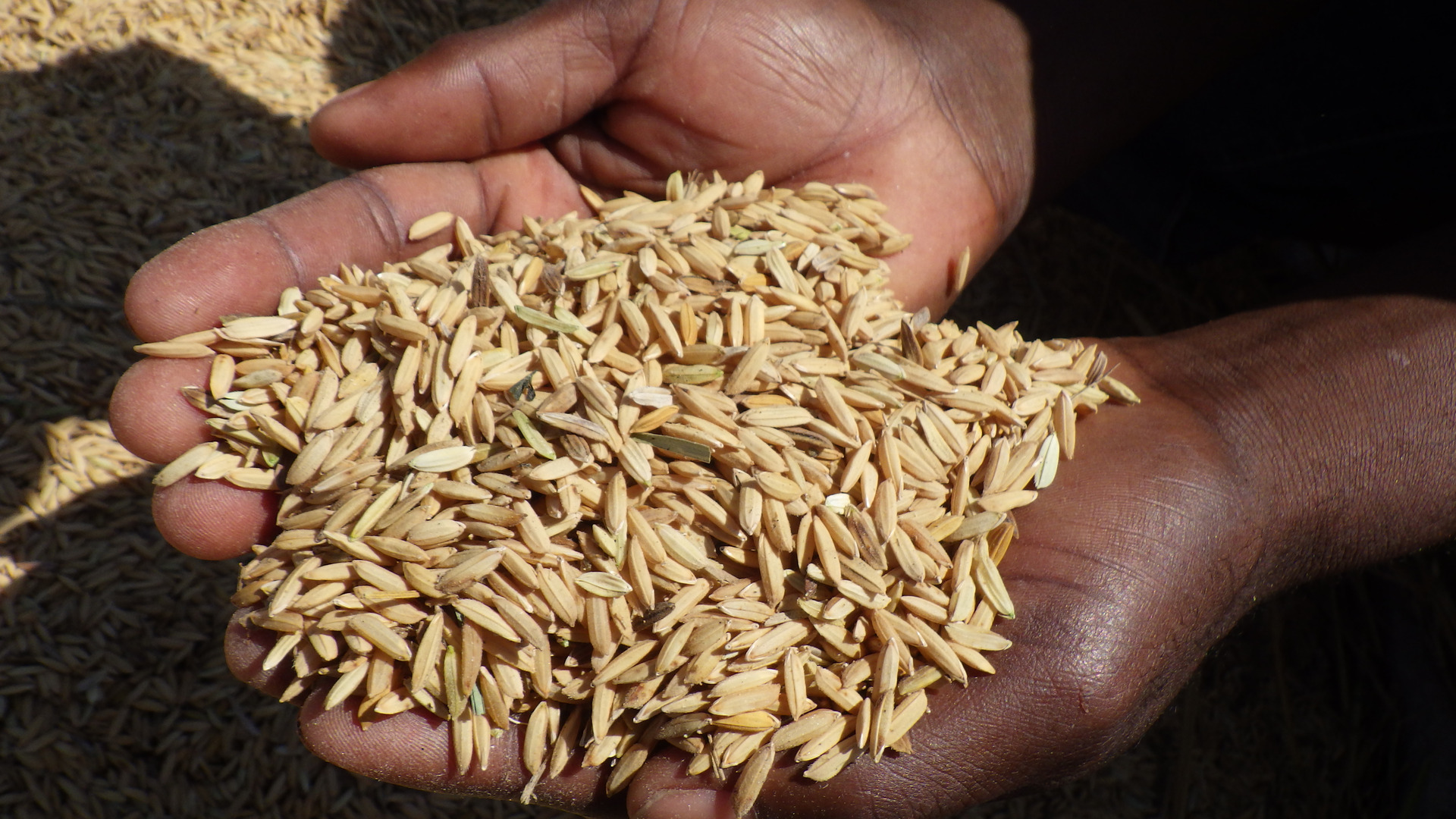 Harvested rice is shown on the hands. The variety is SUPA, a long-grain rice that’s slightly sticky with a nice aroma.
Harvested rice is shown on the hands. The variety is SUPA, a long-grain rice that’s slightly sticky with a nice aroma.
The Zambian government has been working to increase rice production to improve food security and boost agricultural incomes, policies that are in line with CARD’s goals. JICA has been working with the Zambian government on the project aimed at improving rice production since 2015.
The country has huge potential for growing rice, according to GOTO Akio, a JICA expert who provides technical advice as a project leader. “Zambia has so much water, some call it the ‘water pot of southern Africa.’ There are now already 60,000 farms growing rice on 30,000 hectares, but yields remain low due to a lack of rice cultivation expertise. We hope to spread rice-farming knowhow and develop techniques suited to the region, as well as introduce new varieties of rice. We are also aiming to help farmers grow rice more efficiently and to raise the quality of their crops.” GOTO (second from right) checking on rice with farmers.
GOTO (second from right) checking on rice with farmers.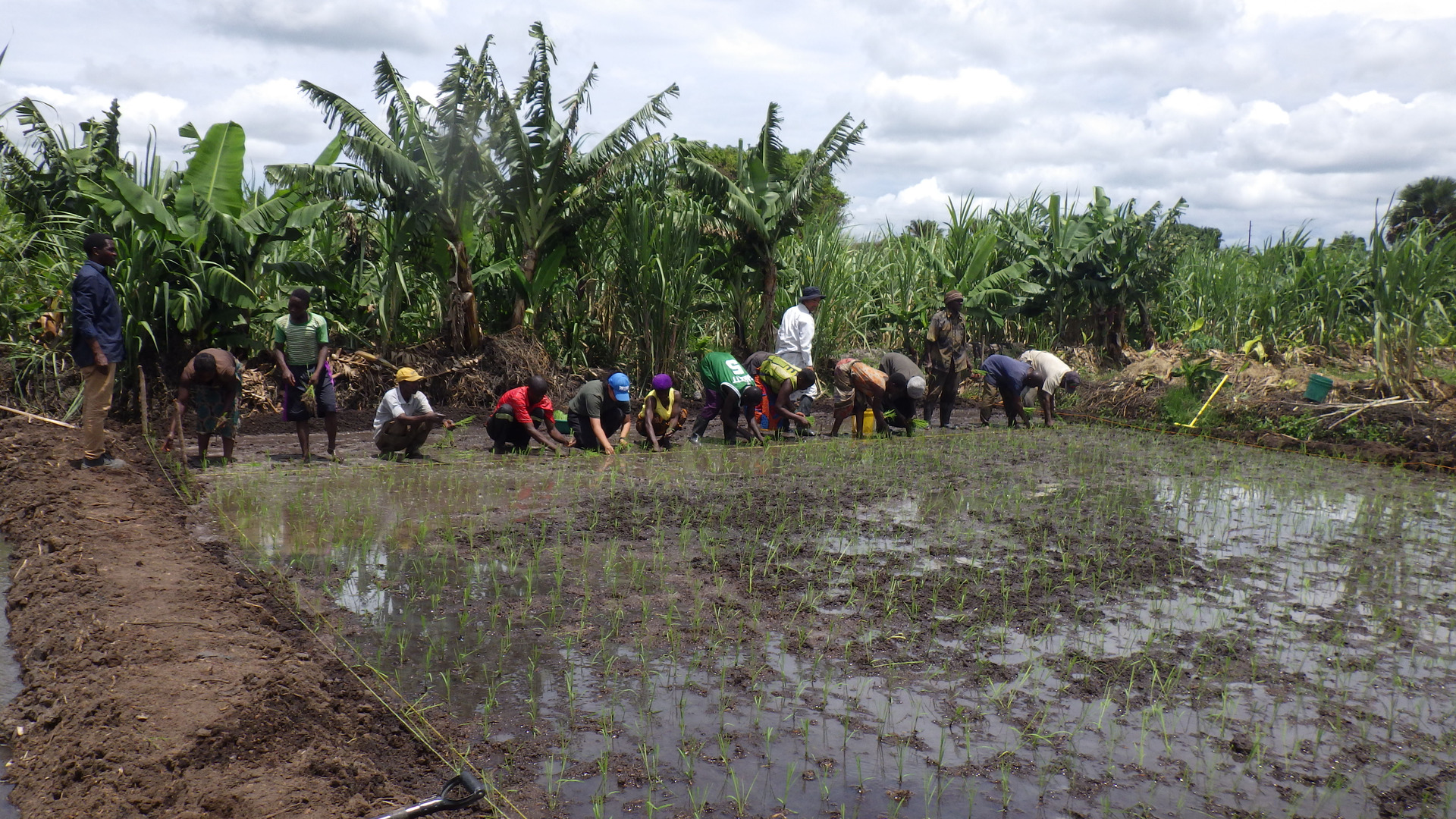 Local farmers transplanting rice together. Many rice fields are natural paddies that lack irrigation, meaning yields are impacted by rainfalls, which is a major issue.
Local farmers transplanting rice together. Many rice fields are natural paddies that lack irrigation, meaning yields are impacted by rainfalls, which is a major issue.
With JICA’s support, the project has gone one step further by also focusing on nutrition, with one goal being to enhance nutritional awareness among rice farmers.
While Zambians don’t lack food to eat on a day-to-day basis, almost half are living below the international poverty line (US$1.90 a day), with the proportion reaching almost 80% in rural areas. In June 2021, JICA surveyed around 300 rice farmers to learn about nutrition in rural areas. Questions included the number of meals people eat each day, types of food, and whether the farmers have ever worried about getting enough food. It was found that many people eat just once or twice a day, grains make up a large proportion of their diet, and there is a lack of protein from sources such as soy, eggs, or meat.
The government of Zambia has also created guidelines aimed at improving nutrition and assigned nutrition coordinators to each region. The JICA project will work with local nutrition experts to improve nutrition among agricultural workers.
“We will tackle these issues from multiple angles, providing them with knowledge about nutrition and guidance on the cultivation of soybeans and brightly colored vegetables that will help them to get a variety of nutrients such as protein and vitamins. We will also help provide an understanding of cost-benefit analysis using the example of the rice market—as the market value of rice drops immediately after it is harvested, but rises again when supply falls. We advise them to store the unhulled rice for several months so that they can sell the crops at the right time and generate income throughout the year,” says GOTO. Nutrition looks set to be an increasingly important aspect of African rice farming over the coming years.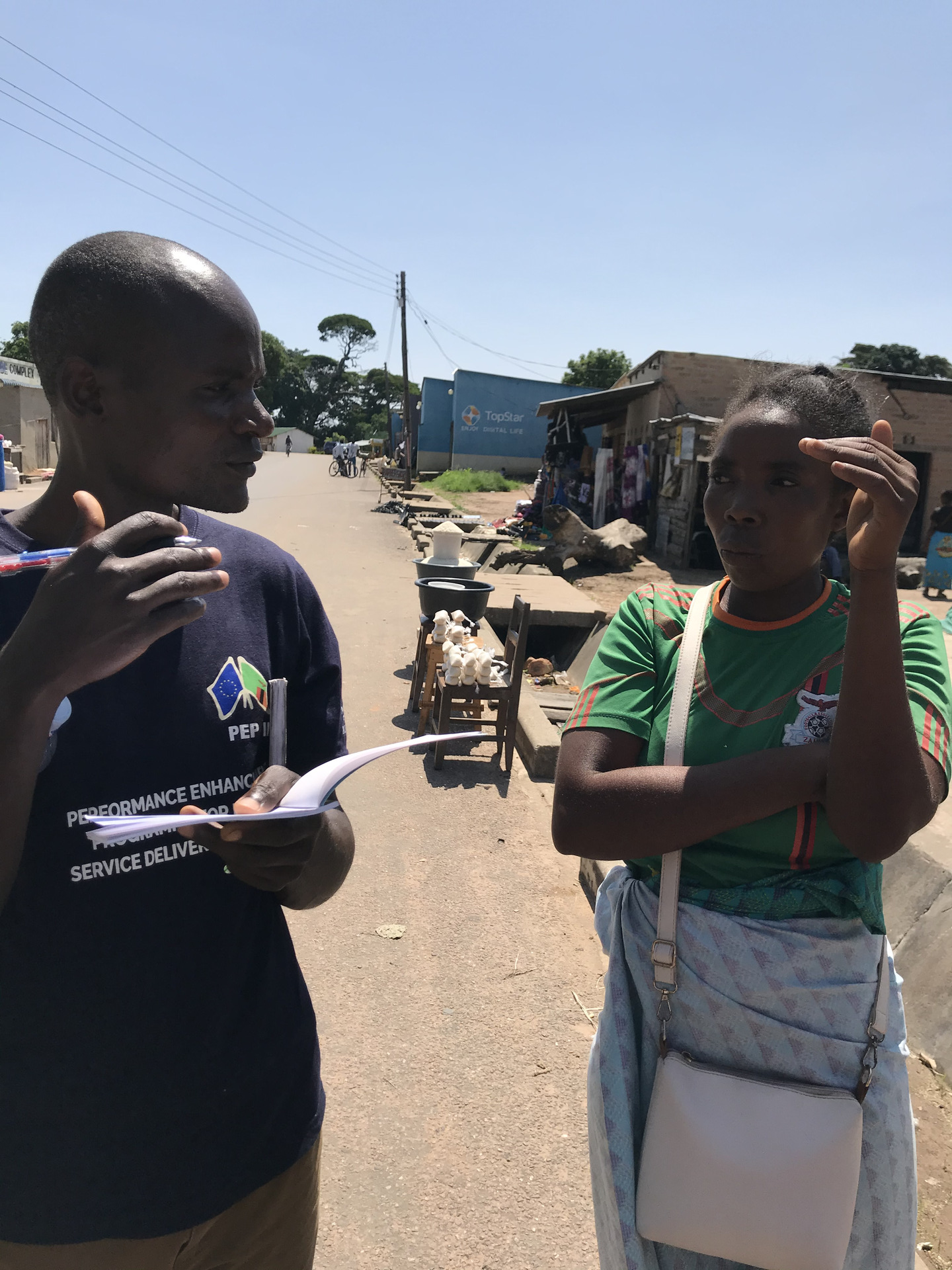 Local staff asking about a farmer’s nutrition. The survey provided valuable information on diets in rural areas.
Local staff asking about a farmer’s nutrition. The survey provided valuable information on diets in rural areas.


